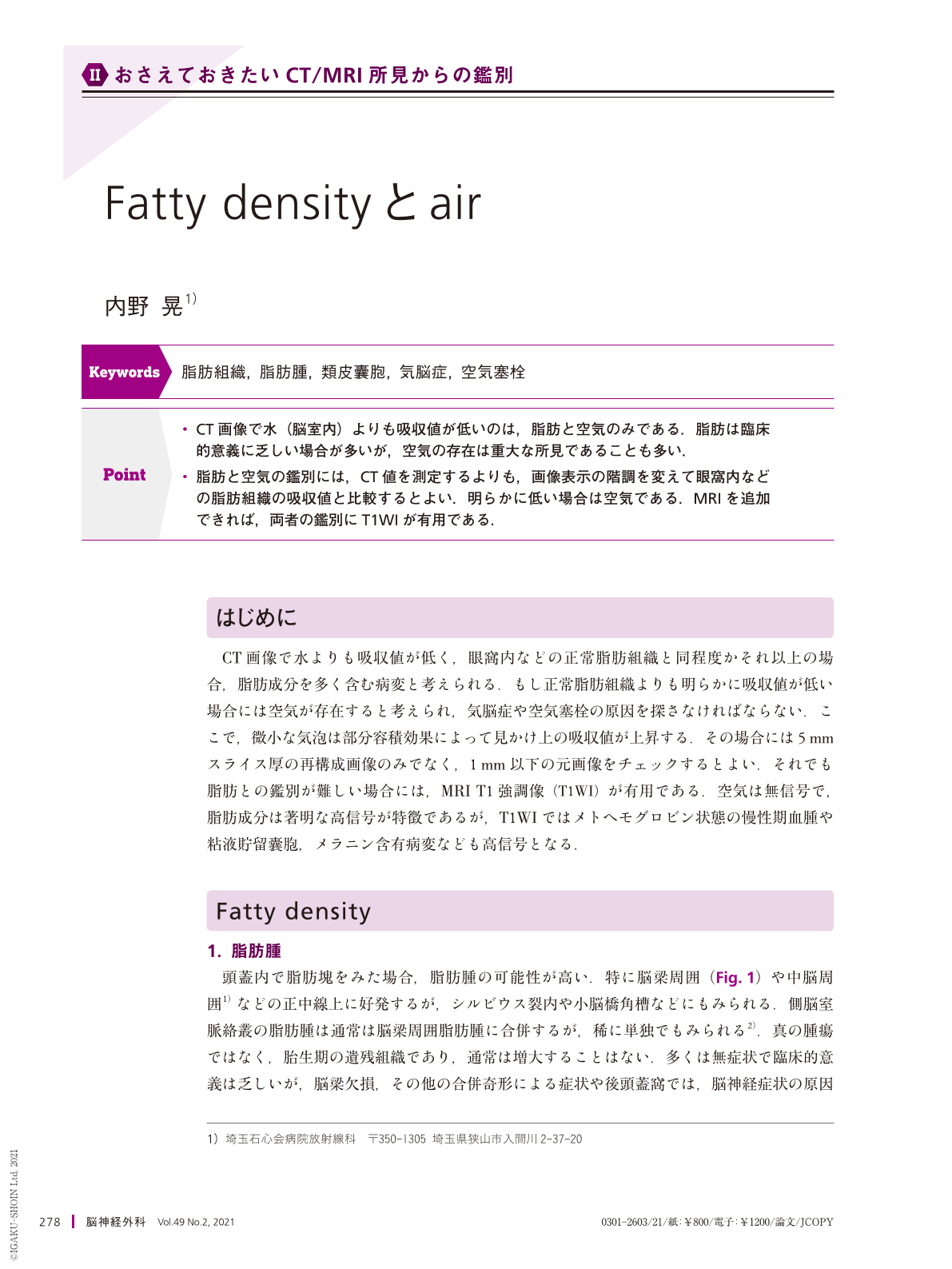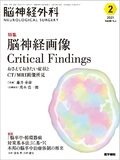Japanese
English
- 有料閲覧
- Abstract 文献概要
- 1ページ目 Look Inside
- 参考文献 Reference
Point
・CT画像で水(脳室内)よりも吸収値が低いのは,脂肪と空気のみである.脂肪は臨床的意義に乏しい場合が多いが,空気の存在は重大な所見であることも多い.
・脂肪と空気の鑑別には,CT値を測定するよりも,画像表示の階調を変えて眼窩内などの脂肪組織の吸収値と比較するとよい.明らかに低い場合は空気である.MRIを追加できれば,両者の鑑別にT1WIが有用である.
Both fat and air have lower attenuation than water on CT images. Excluding ruptured dermoid cysts, a majority of intracranial fats have no clinical significance. In contrast, intracranial air sometimes indicates serious conditions. If CT attenuation of the lesion is apparently lower than that of the orbital fat, it can be regarded as an air bubble. T1-weighted MRI is useful for differentiating fat from air.
Air in the subarachnoid space, called pneumocephalus, is a significant sign of serious head injury. In such cases, there may be cerebrospinal fluid leakage, and the risk of meningitis. Iatrogenic pneumocephalus is also observed, including lumbar puncture. Air in the artery is indicative of air embolism, which is a serious condition. It is caused by trauma and iatrogenic procedures. Both, right-to-left shunt in the heart and pulmonary arteriovenous fistula are risk factors for air embolism. Small air bubbles rapidly disappear from the arterial lumen. On the other hand, air in the dural sinuses is iatrogenic but usually asymptomatic. According to anatomical characteristics, air from the left hand easily migrates into the dural sinuses via the left internal jugular vein.

Copyright © 2021, Igaku-Shoin Ltd. All rights reserved.


